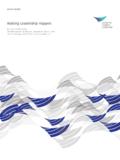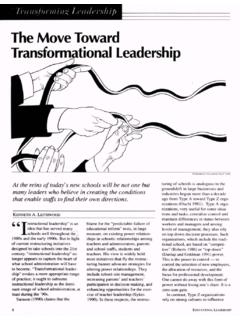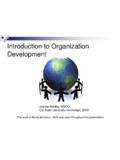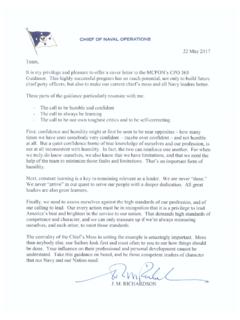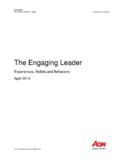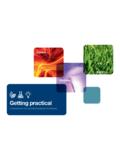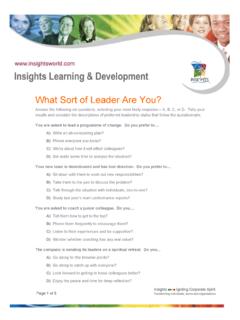Transcription of Leadership development and personal effectiveness
1 Leadership development & personal effectiveness Song of the Open Road Here is the test of wisdom, Wisdom is not finally tested in schools, Wisdom cannot be passed from one having it, to another not having it, Wisdom is of the Soul, is not susceptible of proof, is its own proof, Applies to all stages and objects and qualities, and is content, Is the certainty of the reality and immortality of things, and the excellence of things;. Something there is in the float of the sight of things that provokes it out of the Soul. Walt Whitman, Leaves of Grass, 1855. Contents Introduction pg. 4. Becoming a Resonant Leader: The Five Discoveries pg. 6. 1. Becoming an Authentic Leader pg.
2 9. The First Discovery (My ideal self) pg. 12. 2. personal Authenticity pg. 17. The Second Discovery (My real self) pg. 20. 3. Understanding Learning pg. pg. 25. The Third Discovery (My learning agenda) pg. 28. 4. Building Confidence pg. 33. The Fourth Discovery (Experimenting with new behaviours) pg. 38. 5. Learning Through Authentic Relationships pg. 43. The Fifth Discovery (Developing supportive and trusting relationships to make change possible) pg. 48. Appendix 1: Learning Styles Inventory pg. 53. Authors: John West-Burnham and Jill Ireson Introduction This resource grows out of the Leading Practice seminar held in London in November 2004. It was co-presented by Richard Boyatzis and John West-Burnham.
3 The central theme of the seminar was the relationship between personal effectiveness and Leadership development . This approach is reinforced by the assertion made by Bennis and Goldsmith (1997) that: we learn best when we are committed to taking charge of our own learning. Taking charge of our own learning is part of taking charge of our lives, which is the sine qua non of becoming an integrated person. (Bennis and Goldsmith, 1997, ). This is further reinforced by Senge (2004) and his colleagues: ..if you want to be a leader, you have to be a real human being. You must recognize the true meaning of life before you can become a great leader. You must understand yourself first.
4 (Senge, 2004, )..in this sense, the cultivated self is a leader's greatest tool .. It's the journey of a lifetime. (ibid, ). If you want to be a great leader, .. you need to enter seven meditative spaces. These seven spaces - awareness, stopping, calmness, stillness, peace, true thinking, and attainment - can look like one step, but actually, it's a long, long process. (ibid, ). That's why I think that cultivation, becoming a real human being', really is the primary Leadership issue of our time, but on a scale never required before. (ibid, ). 4 Introduction Effective Leadership is not just a job; it is a complex interaction between a range of personal and professional qualities and experiences.
5 At the heart of effective Leadership is a model of learning that is rooted in personal reflection to enable and enhance understanding and so inform action. We all reflect all the time, at the end of a difficult meeting, driving home, reading the paper, at a conference when a chance comment triggers a chain of thought. However, this is often random and haphazard reflection, and while valuable, it does not permit sustained and fundamental questioning and analysis. Structured reflection is central to any approach to enhancing and sustaining personal and professional effectiveness : any expression of personal artistry or mastery, for example in the performing arts, the creative arts, in spiritual development or professional practice, has to be rooted in reflection.
6 The purpose of this resource is to support personal review and reflection using the Boyatzis five-stage process (Figure 1). Figure 1. Boyatzis' Theory of Self-Directed Learning (Goleman, Boyatzis, and McKee, 2002). 1. My Ideal Self - want to be? I want out of life and work? 2. 4. My Real Self - Practicing the new How do I act? behaviour, building new neural pathways through to mastery 5. Developing trusting relationships, like 2. coaches that help, support & My Strengths - encourage each step in Where my Ideal and 4. the process Real Self overlap Experimenting with new behaviour, thoughts & feelings 2. 3. My Gaps - Where my My Learning Agenda - Ideal and Real Self Where Building on my Strengths Differ while reducing Gaps Introduction 5.
7 Becoming a Resonant Leader: The Five Discoveries Boyatzis' theory of self-directed learning 1. The First Discovery - My ideal self - Who do I want to be? 2. The Second Discovery - My real self - Who am I? - What are my strengths and gaps? 3. The Third Discovery - My learning agenda - How can I build on my strengths while reducing my gaps? 4. The Fourth Discovery - Experimenting with new behaviours, thoughts and feelings to the point of mastery - What actions do I need to take? 5. The Fifth Discovery - Developing trusting relationships that help, support and encourage each step in the process - Who can help me? The following is a summary of Goleman 2002 pp 109-12.
8 6 Becoming a Resonant Leader: The Five Discoveries Self-directed Learning The crux of Leadership development that works is self-directed learning: intentionally developing or strengthening an aspect of who you are or who you want to be, or both. This requires first getting a strong image of your ideal self, as well as an accurate picture of your real self - who you are now. Such self-directed learning is most effective and sustainable when you understand the process of change and the steps to achieve it as you go through it. Self-directed learning involves five discoveries, each representing a discontinuity. The goal, of course, is to use each discovery as a tool for making the changes needed to become an emotionally intelligent leader.
9 This kind of learning is recursive: the steps do not unfold in a smooth, orderly way, but rather follow a sequence, with each step demanding different amounts of time and effort. The results of practising new habits over time are that they become part of your new real self. Often, with changes in your habits, emotional intelligence (EI) and Leadership styles, come changes in your aspirations and dreams, your ideal self. And so the cycle continues . a lifelong process of growth and adaptation. Self-directed Learning 7. When you go through the discovery of uncovering an ideal vision of yourself, you feel motivated to develop your Leadership abilities, that is, you see the person you want to be.
10 The Second Discovery is akin to looking into a mirror to discover who you actually are now - how you act, how others view you and what your deep beliefs comprise. The Third Discovery involves a plan of action that provides detailed guidance on what new things to try each day, building on your strengths and moving you closer to your ideal. The Fourth Discovery comes in practising new Leadership skills. The Fifth Discovery may occur at any point in the process. It is that you need others to identify your ideal self or find your real self, to discover your strengths and gaps, to develop an agenda for the future and to experiment and practise. Without others' involvement, lasting change can't occur.










